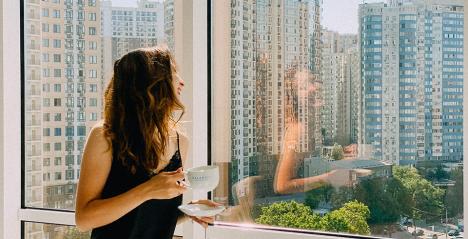If you have been doing urban exploration of Toa Payoh Central, you may have stumbled across a beautiful Banyan tree that lies between Blocks 178 & 179, with its characteristic leafy canopy & hanging branches. There is also a Shrine besides it for devotees to worship. This landmark is literally known to most old time residents of Toa Payoh. Image Credit: Mothership Video Credit: Discovery Walking Tours TV
Named Ci Ern Ge, this is a shrine for the ‘tree spirit’ that resides within this banyan tree. Devotees regard this tree as a 'shen shu’ (‘god tree’ in Mandarin). It is also known as the Tree Shrine or Tree Temple. The reason for this belief was due to the mystery of how the century old tree stayed rooted despite harsh weather conditions and several attempts to remove the tree, thus making them believe that a tree god existed and it was refusing to budge. In its full glory, this old tree used to stand approximately six storeys tall.
The story of this shrine dates back to the 1960s, when Toa Payoh was still very much a ‘Kampong’ (village). Subsequently the government identified Toa Payoh for development into its first HDB township. In 1965, a bulldozer that was tasked to bring the tree down, mysteriously halted abruptly several times just before reaching the tree. It also could not move forward, just reverse. Eventually it overturned and supposedly caused the death of the bulldozer operator. Another version of the story said the operator jump off the overturned bulldozer and broke his leg. Taoist priests & Buddhist monks were then brought in to appease the spirit but it would not budge. Nobody was willing to do something to the tree.
Subsequently, the authorities had to change the alignment of the planned buildings to leave the tree alone. The initial plan to build a long row of shophouses was abandoned. Instead, the government split the development in two to accommodate the banyan tree. After that incident people believe there is a spirit living in that tree and built a shrine beside it in 1969. The original shrine was only a wooden shed.
The shrine originally houses the Na Tuk Gong deity before it made way for the Goddess of Mercy (Guan Yin) statue. The shrine also acquired the name of Ci Ern Ge. The original caretaker was the monk who brought the statue of Goddess of Mercy from China. He had a habit of sleeping under the tree. When the monk died of a heart attack in 1975, his son Chen Zhou Rong took over and also stayed on-site. Come rain or shine, Chen would greet visitors who arrived at all hours to seek solace from the tree and the gods lining the shine’s altar. As well as attracting devotees, the shrine also attract its fair share of curious onlookers and tourists from afar.
There are three deity statues in the temple. Na Tuk Gong was the original primary god in the temple. However, the temple caretaker decided to change it to the Goddess of Mercy (Guan Yin) because there was an influx of Thai, Vietnamese and Chinese migrants in the Toa Payoh area and most of them worshipped Guan Yin. The statue of Guan Yin was originally wood in color.
When the temple was under renovation, the caretaker decided to order a new Guan Yin statue. Unaware of the significance behind the different colours of Guan Yin statues, he mistakenly ordered a black Guan Yin figure which were more often worshipped by Indian devotees. This change in Guan Yin statue resulted in an increase in the number of Indian devotees. Other secondary gods in the temple include Tua Pek Gong & Na Tuk Gong. Na Tuk Gong is the one known as the Tree Spirit. In the temple, the statue of Na Tuk Gong is appropriately placed in an area that includes a section of the tree trunk.
The tree trunk was incorporated into the temple and it was made into a space for Na Tuk Gong. The last secondary god in the temple is Tian Gong. While there is no physical statue of Tian Gong, devotees will pray to it first before offering their prayer to other gods in the temple. The devotees will look up to the sky and raise their joss sticks as a sign of respect to Tian Gong.
On 11th Sep 2013, huge groves of the child trees of the main banyan tree fell over by itself, damaging several cars and the shrine. Miraculously the statues of the deities remained intact. Residents in that area said it was a hot scorching day and no strong wind on that day. For the caretaker, he saw the collapsing tree as the sign that his promise to his father had been fulfilled and he returned to his hometown in Malaysia.
The Toa Payoh Central Merchants’ Association then engaged specialists to rebuild the shrine and the banyan tree was pruned for safety reasons. More than half of the original tree was gone by the time they finished. The tree was trimmed to a shorter, more manageable height & to be slightly taller than the shrine.
An interesting note is that Ci Ern Ge is actually a registered place-of-worship with its own security, ‘trustees’, and charitable services. After being rebuilt, it is currently being maintained by 4 volunteers. The entire operation is now managed by the Toa Payoh Merchants Association, who took over its operations in 2013. They now perform most of the duties, which range from collecting donations to pest control.
A last interesting piece of trivia is the stone wall in front of the temple that extends across the width of the temple. Despite the humble appearance, this stone wall plays a major role in the Feng Shui of the temple. In the 1969s, after the redevelopment of Toa Payoh Central, the area around the shrine was found to be constantly flooding despite whatever flood prevention measures put in place. A Feng Shui Master was invited to assess the situation and noted that the Na Tuk Kong was facing the back of the HDB flats where most of the toilets and kitchens are located.
This was considered a great disrespect for the deity as the toilets and kitchens contain more filth than any other parts of a house. This resulted in floods as the Na Tuk Kong was not happy for being disrespected. Hence, the Feng Shui master advised the caretakers of the temple to erect a stone wall in front of the temple to block out the filth from the toilets and kitchens. Immediately after the stone wall was erected, the flooding stopped.
Another reason for erecting the stone wall is for it to act as the main entrance of the temple. Many Chinese temples are entered from the side doors instead of the main entrance. This is yet another form of respect for the gods and deities. As the main entrance is believed to be the door for gods to move in and out of the temple premises, devotees should refrain from entering the temples through the main entrance in order not to offend the gods. Hence the stone wall plays the role of a main entrance, preventing people from entering the shrine from the center.
The next time you visit Toa Payoh central, take a short walk over to visit this landmark and now that you know all the facts above, see if you can spot all these interesting features mentioned.











